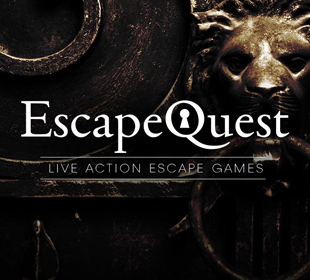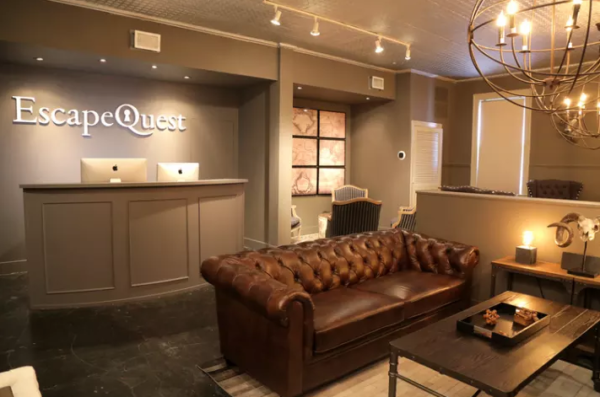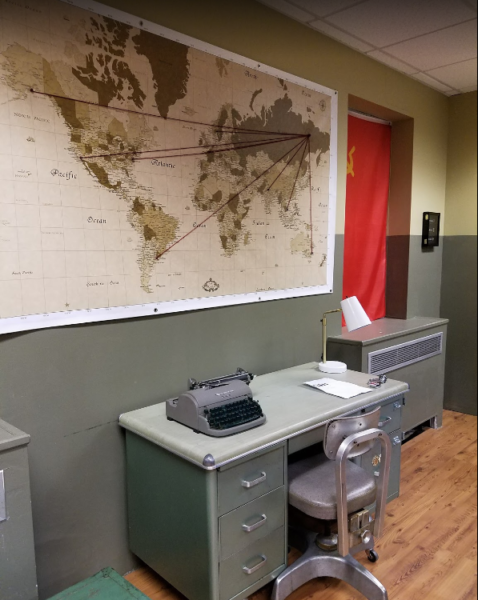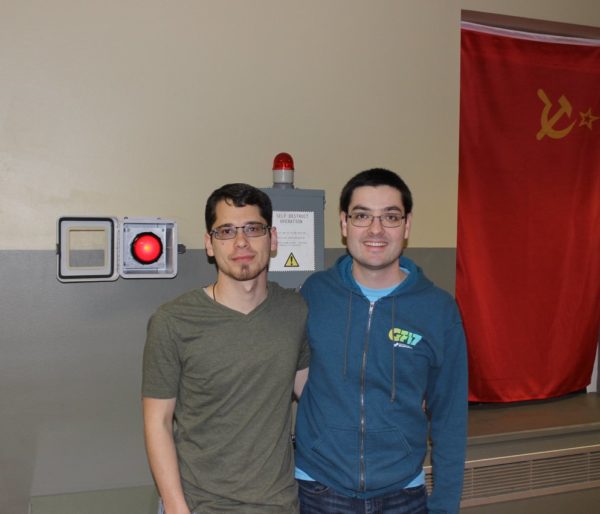
RATING: 2 Keys RESULT: Win REMAINING: 16:32
We are highly trained agents capable of handling any situation. Given an hour and provided with the most vague intelligence report you’ll ever read, of course.


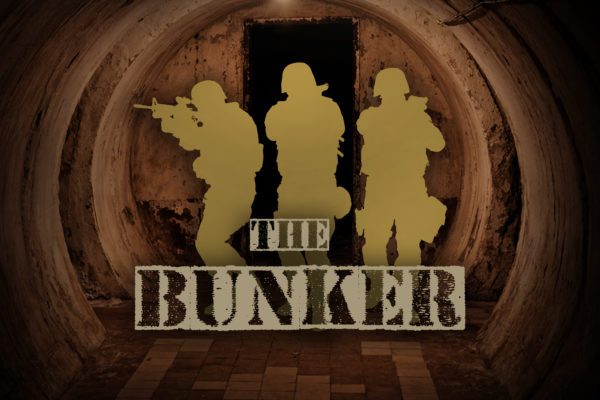 One week ago, the Pentagon received intel suggesting that a cache of deadly Soviet missiles capable of striking any location in the world would soon be launched. Your mission is to rescue Sergeant Williams and to finish the job he was sent in to accomplish.
One week ago, the Pentagon received intel suggesting that a cache of deadly Soviet missiles capable of striking any location in the world would soon be launched. Your mission is to rescue Sergeant Williams and to finish the job he was sent in to accomplish.
The story we’re given here is pretty standard. There’s a captured soldier that needs rescued and we are being sent in to retrieve him, and save the world from nuclear hellfire. We found additional story via some Soviet intel and our recently departed spy friend, Sergeant Williams – whom has left behind some scribblings to help us out.
As we worked our way through the room’s puzzles, we uncovered more of the story. Nothing really surprised us and there were no twists nor turns to speak of. There were some pictures of real people used as part of a puzzle with real facts about them, but none of this added to the story. What we learn is that we need to save Private Whats-his-face, find the deactivation codes and leave before we get caught. We also learn that even a situation involving imminent global destruction can feel boring and unfulfilling.

It looks like the Soviets have really cut back on their secret bunker budget, because apparently a drop ceiling, windows, and an unknown staircase that we aren’t allowed to touch or acknowledge are all the standard in the latest Cold War-era trends.
Empty cabinets lined up along three of the walls, with a staircase directly across from the room’s only door that was not even part of the game. There was a table in the middle of the “bunker” with the (sadly) coolest thing in the room resting on it – some sort of telescope that had a 90° curve to see around corners. Of course, it was merely a prop which wasn’t used at all – but notable as one of only a handful of props that were in the room.
In the back right corner of the single room, there was a chain link fence jail cell where we found our captured spy – an unconsciousness pile of crash test dummy parts. Along another wall was an old metal desk with a few locks on it, with a map of the world on the wall above it. Spread through the room were random illustrations of Morse code, knots, and military metals. Soviet flags covered the windows.
Things felt mostly era-appropriate, but generally seemed vague in their time-period, making it hard to place were we not given the time period in the story. The drop ceiling was especially out of place, as well as the fake wood floors. The drab paint on the walls certainly fit the theme, but just felt odd because of the ceiling and floor.
The room seemed to lack an element of motivation. There was nothing to make us feel like the world could end if we fail other than the story saying “to get out, disarm the missiles.” No flashing lights, nor sirens. As a result, we felt like it didn’t matter if we succeeded or failed, which flew in the face of what little story there was.
Essentially, this came across more as a high school classroom that the students tried to make look like a Soviet bunker for a history project in one afternoon. Only worse.


The Bunker’s puzzles may have been the most generic an escape rooms could have to offer. We had to read dossiers and decipher obvious secret messages. We had to translate what we thought was Morse code but was merely a message with dots and dashes used as the format. (We learned after that the code referenced was supposed to be Morse code, however there may have been a transcribing error when constructing the puzzle.) We had to use a black light to search for a secret message. All of the puzzles matched the theme and story, but the theme and story were just so generic, that in order to stand out, the they would have had to do something special – and they simply did not.
There were missed opportunities where the room could have used unused props and scenic elements to construct puzzles in a better way that would have dramatically enhanced the diversity of the puzzles and their structure, which was mostly linear. I don’t normally hold linearity against a game, but when you have the opportunity to improve a stale formula by adding some branching elements and don’t, that’s something I feel will almost always detract from an experience.
A few puzzles lead us to pieces of information that we could collect in any order, and that definitely helped to partially alleviate the game’s problem of, at times, having an unclear direction. The most important thing for a linear game to do is have a clear path forward, but at times this room had difficulty keeping us on track and signalling what to do with information we may have found or after finding the solution to a puzzle.

The Bunker is an odd room for this venue. While we’ve only done one other game at this location, it was much more competently executed in every respect.
We found the story, scenic, and puzzles to all be lacking in one key respect – they didn’t do anything to drive the experience. All three elements were cohesive, but when combined, failed to deliver an effective or exciting experience mainly due to how stale and generic each aspect felt own its own. Overall, this created an effect of each element amplifying the others’ shortcomings leading to a game that felt like it was made by someone who smuggled incomplete plans for the room out of a secret Soviet bunker.
Show your support for Escape Authority and get social with us:

Venue: Escape Quest
Location: Alexandria, VA
Number of Games: 5
GAME SPECIFIC INFORMATION:
Duration: 60 minutes
Capacity: 10 people
Group Type: Public / You may be paired with strangers
Cost: $34 per person











